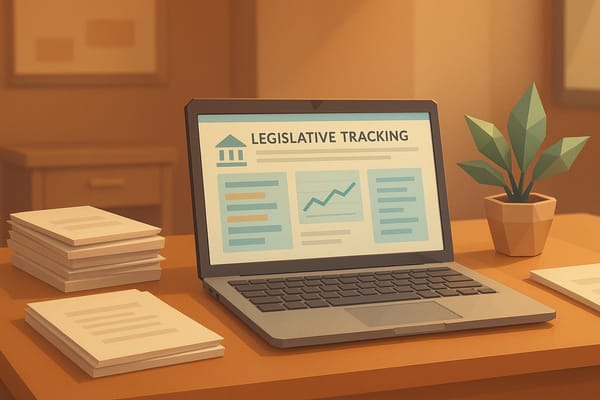Alabama Bill Restricts Cell Phone Use in Schools

In an age where technology permeates every aspect of our lives, schools are grappling with the challenge of balancing its benefits with potential distractions. Recently, a proposed bill in Alabama, identified as HB65, has ignited debate regarding the use of cell phones and other electronic devices in K-12 public schools. This legislation seeks to introduce a state-wide model policy aimed at restricting the use of these devices during the school day. This isn't just about keeping kids off their phones; it's about creating an environment that prioritizes learning and minimizes distractions. This blog post will delve into the specifics of HB65, exploring its key provisions, potential impacts, and the implications for Alabama’s educational landscape. We’ll examine the proposed restrictions, the exceptions outlined, and the timeline for implementation, ensuring a comprehensive understanding of this pivotal piece of legislation.
State Board to Create Model Policy
At the heart of HB65 is the mandate for the Alabama State Board of Education to develop a model policy that severely restricts the use of electronic communication devices during the school day. According to the bill, the State Board is tasked with crafting this model policy no later than January 1, 2026. This policy serves as the foundation upon which individual local boards of education will base their own rules. The intent is to standardize the management of electronic devices across the state, ensuring a consistent approach to this growing challenge. The bill defines electronic communication devices broadly as "Any privately owned, portable wireless device that has the capability to provide voice, messaging, or other data communication between two or more parties including, but not limited to, a cellular phone, tablet, computer, pager, or other electronic messaging device." This expansive definition ensures that the policy will apply to a wide array of devices that could potentially distract from the learning environment. It’s a clear move towards minimizing disruptions and reinforcing the focus on classroom instruction.
The creation of a model policy by the State Board is a crucial step, as it sets a precedent and guides local educational authorities. However, the success of this initiative will largely depend on how well this model policy is designed and implemented. As the bill states, "The model policy shall provide exceptions including, but not limited to, permitting a student to use an electronic communication device: a. In the event of an emergency or to manage the student's health care; or b. If the use is included in the student's individualized education program (IEP) or a plan developed under Section 504 of the Rehabilitation Act of 1973, 29 U.S.C. § 794." Therefore, the state must carefully balance the need for restrictions with the equally important needs of accessibility and safety. This policy aims to provide a framework that can be adopted and adapted to the specific circumstances of each local school district, while also ensuring consistent standards statewide. It's not just about a blanket ban; it's about a reasoned approach to technology use in schools.
Local Board Implementation and Adoption
While the State Board of Education is tasked with creating the model policy, the bill places the onus of implementation on local school districts. HB65 explicitly requires each local board of education to adopt a policy relating to electronic communication devices based on the model policy created by the State Board. This policy must be implemented by the start of the 2026-2027 school year, setting a clear deadline for local boards to act. This step is crucial because local boards understand the specific needs of their communities and can tailor the model policy to address those specific needs. According to the bill, "Each no later than the beginning of the 2026-2027 school year, each local board of education may adopt shall adopt and implement a local policy that pertains to pocket pagers, cellular telephones, and other electronic communication devices relating to the use of electronic communication devices on school property. The policy, at a minimum, shall reflect the model policy adopted by the state board." The bill emphasizes that local policies must reflect the model policy, ensuring uniformity across the state while allowing for some degree of local adaptation.
The responsibility placed on local boards highlights the importance of community engagement. Local education leaders will need to communicate these policy changes to parents, students, and teachers, and ensure clear guidelines and expectations are established. The implementation will involve various steps such as creating guidelines on when students can use their devices, the consequences of violating the policy, and how students with IEPs or 504 plans are accommodated. This process will necessitate local school districts to establish clear rules around cell phone usage during class, lunch, and breaks, and to provide clear guidance on the exceptions outlined in the model policy. The ultimate goal is a consistent, predictable, and effective approach to technology use in schools that is understood and respected by everyone involved. Therefore, local boards will play a vital role in executing the legislation successfully.
Exceptions and Special Considerations
Recognizing that a blanket ban on electronic devices may not address all situations, HB65 specifically includes exceptions to the cell phone restriction policy. The bill clearly states that students may use their devices under certain conditions. According to the bill, these exceptions include: "In the event of an emergency or to manage the student's health care; or if the use is included in the student's individualized education program (IEP) or a plan developed under Section 504 of the Rehabilitation Act of 1973." These provisions ensure that students who need their devices for medical reasons or those who have an existing plan accommodating their specific learning needs will not be unfairly penalized. The exceptions also acknowledge the reality of modern society, where students may need their devices to contact family during emergency situations, or to manage their health issues throughout the school day. In fact, the bill emphasizes the flexibility that these exceptions provide and allow students to have their health and learning needs prioritized.
These exceptions, while crucial, also bring an element of complexity to the implementation of the policy. It will be important for local school boards to develop clear and specific procedures for students to access these exceptions. They will have to establish procedures to verify students’ needs without creating unnecessary bureaucratic hurdles, and to ensure that teachers and school staff are aware of these exceptions and how to handle them. The bill also leaves some room for interpretation, meaning how 'emergency' and 'health care' are defined. Local policies must address those concepts, providing clear direction to staff and students. These exceptions underscore the bill’s intention to balance the need for order and the well-being of students. It is crucial that the guidelines are clear to everyone so that the exceptions function as intended: to support students who need accommodations without undermining the overall goal of limiting distractions.
Enforcement and Consequences
The bill explicitly outlines that any student violating the established policy regarding cell phone use “shall be subject to suspension by the board of education.” This statement signifies the severity with which the policy is intended to be enforced. The emphasis on suspension for policy violations sends a strong signal to students about the importance of adhering to the new rules. While the exact nature of the suspension, such as the length of the suspension or the specific circumstances warranting it, is left to the local school board, the bill ensures that there will be consequences for non-compliance. It is likely that there will be a graduated disciplinary response system in many schools, starting with warnings or parent-teacher meetings before progressing to more severe disciplinary measures like suspensions. However, this will depend on the decisions made by local authorities. The focus is on ensuring consistency and transparency in the enforcement process.
Beyond the potential for suspension, the bill also underscores the fact that the rules regarding device usage are not suggestions but are mandatory directives. The language used within the bill, “shall adopt,” emphasizes that local schools have no choice but to create these policies and to enforce the rules based on the model policy of the State Board. This mandatory directive illustrates that the state intends to create a firm policy on device usage, and is not simply requesting cooperation with a vague guideline. The bill’s emphasis on enforcement is critical, as a policy without consequences is often ineffective. How the enforcement is carried out and the severity of the punishments will likely vary across different school districts, but the intent of the bill is clear: to significantly reduce cell phone distractions in classrooms and to enhance the learning environment. The success of HB65 hinges not only on its implementation but also on its effective and fair enforcement.
Effective Date and Timeline
The bill specifies clear timelines for both the creation of the model policy and the adoption of local policies. According to the text, the bill becomes effective on June 1, 2025. Following this, the State Board of Education is mandated to adopt the model policy restricting cell phone usage no later than January 1, 2026. Subsequently, local boards of education must implement their device policies by the beginning of the 2026-2027 school year. These deadlines ensure a structured approach to policy implementation, providing ample time for all stakeholders to prepare and adapt to the new rules. The time frame suggests a careful, methodical approach that prioritizes careful planning over a sudden shift in school policy. The timeline is important because it gives administrators, staff, parents, and students a chance to get used to the new changes before they are implemented.
The implementation timeline reflects a recognition that change of this nature requires thorough planning and stakeholder engagement. Local school boards and districts will have adequate time to collaborate, discuss, and develop clear policies that are specific to their communities. The time allows schools to not only craft the policy, but also to communicate with parents and students so that they understand the changes before they are put into place. This phased approach is beneficial because it prevents any sudden changes from impacting schools too severely and ensures that the new policies become accepted and integrated. The clear dates and timelines set the expectation that all schools are in compliance by the specified date, and this is important because it means that schools will be uniformly held to the same standards. By creating a timeline, HB65 promotes a smooth and organized transition to a more focused learning environment.
Conclusion
HB65 represents a significant step towards addressing the challenges posed by the widespread use of electronic communication devices in Alabama’s public K-12 schools. The legislation mandates the creation of a model policy by the State Board of Education and requires local boards to implement their own policies based on that model by the 2026-2027 school year. The key goals of HB65 are clear: to reduce distractions in the classroom, to prioritize educational outcomes, and to create a more focused learning environment for students. While the bill places restrictions on device usage, it also acknowledges that there are legitimate cases when the use of electronic communication devices is necessary. Therefore, it provides exceptions for emergencies, health care, and for students with IEPs or 504 plans. This approach balances the goals of restricting device usage with the essential needs of students, and it reflects an understanding of the complex challenges that come with technology in the classroom.
The success of HB65 will hinge on careful implementation, clear communication, and a commitment from all stakeholders to prioritize the educational mission of schools. The clear timelines for adoption, the establishment of a model policy, and the enforcement mechanisms provided by the bill, all suggest the importance of this matter to lawmakers. As local school boards begin to adopt the model policy and create their own procedures, community engagement and stakeholder involvement will be essential. The challenge is to implement a policy that protects the learning environment while still considering student safety and individual learning requirements. HB65 has the potential to reshape the educational landscape in Alabama, providing a framework for a more focused and engaging learning environment, but its true impact will be revealed in the careful, thoughtful, and practical implementation of its provisions. The bill’s emphasis on a consistent yet flexible approach suggests that lawmakers understand the importance of addressing this modern challenge while ensuring that student needs are met.




